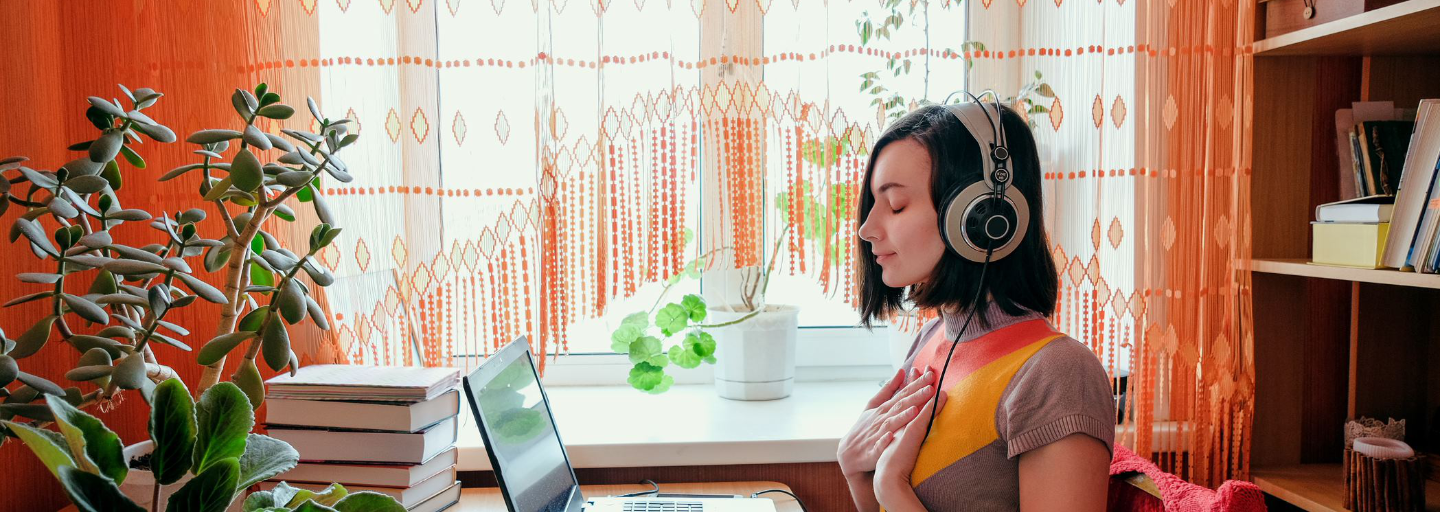Self-help program
6. Limiting the amount of time spent in bed
This exercise is the most challenging of all the techniques featured in the program. It is also the most time-consuming and requires the most practice.
The exercise involves limiting the amount of time spent in bed. The idea is that you not spend any longer in bed than you slept on average during the previous week.
You will need your sleep diary for this exercise. Your wake-up time should be the same regardless of the day of the week.
How can practising help?
Limiting the amount of time spent in bed alleviates insomnia through action.
NOW: ACTION
Thought
Emotion
Physical sensations
Sleep efficiency
A good starting point for this exercise is to familiarize yourself with the concept of sleep efficiency. Sleep efficiency is the percentage of time spent asleep while in bed.
A normal sleep efficiency is considered to be 85% on average, which should be your target.
Once you know how to calculate your sleep efficiency, you will be able to tell how close to the target you are. It is a good idea to also record the percentage in your sleep diary.
Sleep efficiency is calculated by dividing the amount of time spent asleep by the total amount of time spent in bed.
If, for example, you go to bed at 10.00 p.m. and get up at 6.00 a.m., you have spent eight hours in bed. If you spent seven hours of this time asleep, your sleep efficiency would be seven divided by eight, i.e. 88%.
Remember why you are doing this
Learning to limit the amount of the time spent in bed requires patience and some tolerance for discomfort, as the technique may initially shorten the amount of time you spend asleep. When done correctly, however, it helps to build sleep pressure and consolidate sleep into a single block, reducing nocturnal awakenings.
If you struggle with the exercise, remind yourself why you are on this journey and what you are prepared to do to achieve your goals.
You will not have to be limiting the amount of time you spend in bed for the rest of your life. The exercise usually helps to achieve sufficient sleep efficiency in a few weeks. Once you begin to sleep better and more regularly, you can discard the technique.
Please note:
Never limit the amount of time you spend in bed to less than six hours.
This exercise is not recommended for people with bipolar affective disorder.
Exercise: Limiting the amount of time spent in bed
Goal
Build sleep pressure to make it easier to fall asleep and reduce the number of nocturnal awakenings.
Instructions
Calculate your sleep efficiency
A normal sleep efficiency is considered to be 85% on average. Once you know how to calculate your sleep efficiency, you will be able to tell how close to the target you are. Sleep efficiency is calculated by dividing the amount of time spent asleep by the total amount of time spent in bed.
The idea is that you do not spend any longer in bed than you slept on average during the previous week.
For example, if you sleep seven hours on average and you want to get up at 8.00 a.m., you should aim to go to bed at 1.00 a.m. Your wake-up time should be the same regardless of the day of the week.
You will most likely start going to bed later than what you are used to. Trust the technique; it will help you to build up enough sleep pressure, which is one of the prerequisites for falling asleep.
Never limit the amount of time you spend in bed to less than six hours, however. Remember to also observe the 15-minute rule while doing this exercise: If you find that you are still awake after 15 minutes, get out of bed and move to your alternative relaxation spot.
Use the table and examples below as a guide. Alternatively, click on the link at the bottom of the page to open the table in PDF format.
Plan your schedule around your wake-up time in the morning.
Keep your wake-up time the same regardless of the day of the week for a period of at least two weeks.
I go to bed at
Your bedtime is calculated based on your wake-up time and the recommended amount of time in bed: 7 a.m. (wake-up time) minus six hours (recommended amount of time in bed) equals 1 a.m.
